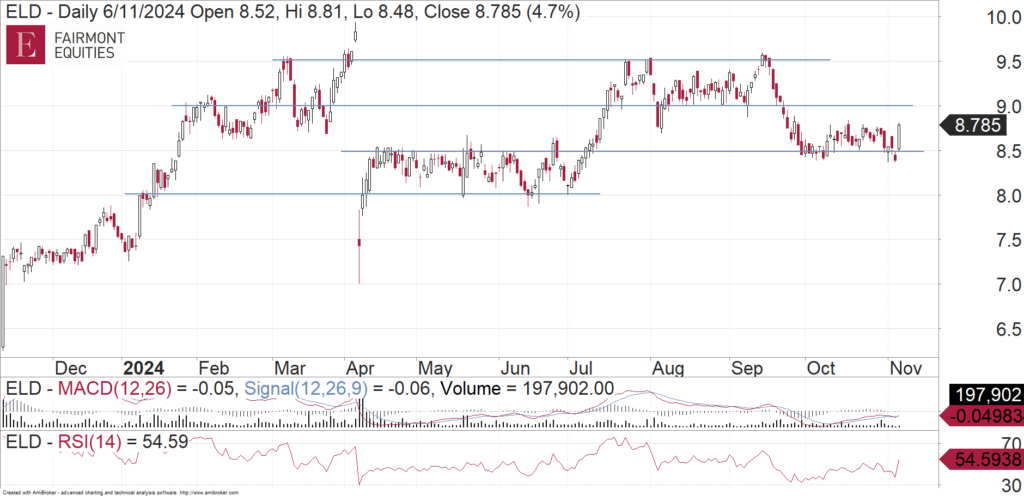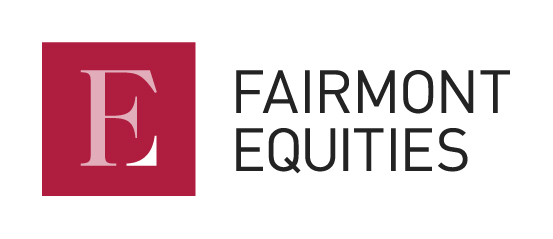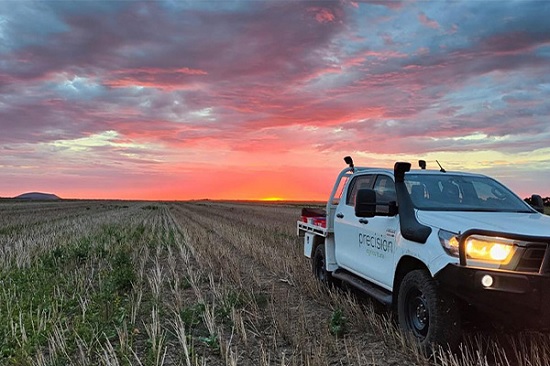We recently researched Elders (ASX:ELD) in The Dynamic Investor. ELD shares are considered a preferred agriculture exposure, given its more stable earnings base and lower exposure to factors outside of the Company’s control. Drier conditions in some regions, lower livestock prices and margin pressure have weighed on investor sentiment.
However, both the rainfall outlook and livestock prices have recently improved. The Company has also made multiple acquisitions that are expected to lift earnings. Despite this, the important question is whether ELD can generated earnings growth over the medium-term that is in line with its own targets.
About Elders
Elders is one of Australia’s leading agribusinesses, with a national distribution network with over 450 points of presence throughout Australia. ELD’s geographic and product diversification a is key strength of the business.
The Company supplies rural farm inputs. These include seeds, fertilisers, agricultural chemicals, and animal health products. ELD also provides agency, real estate, financial and feed and processing services. Livestock prices and volumes, as well as retail product sales are key earnings drivers. Seasonal conditions play a significant role in determining the trend of these drivers.
ELD has a number of reporting segments. The main segments are Retail Products and Agency Services, which together account for over 80% of group margin.
Key Fundamental Drivers
Improved External Conditions
ELD is cycling materially lower comparisons in livestock pricing indicators. Cattle, trade lamb and mutton prices are all demonstrating high double-digit growth through 4Q24 and into 1Q25 on a year-on-year basis. Saleyard volumes are also up strong through 2H24 for both cattle and sheep/lamb.
Uniquely combining both Fundamental and Technical Analysis
Not yet a subscriber? Join now for FREE!
Receive our weekly tips and strategies into your inbox each week.
BONUS: Sign up now to download our 21 page Trading Guide.
In addition, crop protection export prices (ex-China) to Australia and fertiliser pricing don’t indicate the same level of year-on-year headwinds in FY25 as was evident in FY24. In the latter year, higher value carryover inventories were elevated. Vegetations in the core cropping regions remains well above average and consistent with some of the record crops reported in the past. In the core markets that drive ELD crop demand (Western Australia, South Australia, and Victoria) conditions were below average until late 4Q24. As such, this is likely to have impacted crop demand.
According to the Bureau of Meteorology, the 3-month rainfall forecast is above average. The improved rainfall forecast is expected to be supportive of a more normal summer crop purchasing profile than a year ago, which was a major impediment to ELD 1H24 trading activity.
Earnings Risk from Higher-Than-Expected Cost Growth
ELD reported total cost growth of +11%. However, underlying base business costs only rose by 1.8%. In context, the underlying cost base was broadly flat in 2H23, in comparison to both the prior corresponding period (2H22) and on 1H23. Most of the cost increases (total, not underlying) incurred in 1H24 related to inflationary (CPI) increases, additional staff associated with acquisitions undertaken in FY24.
With the Company pursuing further acquisitions from 15 potential targets, we do not expect a material decline in the overall cost base. This is because there is typically a lag between incurring additional costs associated with the acquisitions and earnings contributions from those acquisitions – with contribution from prior acquisitions diluted by additional costs associated with new acquisitions. To illustrate, the Company made nine acquisitions in FY23 but followed up with 11 in FY24.
Backward Integration Strategy to Support Margin
The backward integration strategy across crop protection and animal health products involves the Company selling more of its own branded products at higher margins. In essence, this entails replacing 3rd party products with its own internally produced offerings across crop inputs and animal health.
Backward integration in AgChem fell to less than 30% of sales in 1H24 (from 54% at FY23). This was due to ELD buying additional 3rd party product to cater for a surge in demand in early January. This level is expected to normalise in 2H24 with ELD expecting 60% average over FY24, which should be positive for margin mix in 2H24.
The Company has a long-term backward integration target of 70%. Ongoing execution of the backward integration strategy is likely to result in the proportion of own brand products increase. In turn, this is expected to underpin margin expansion as ELD captures more of the supplier margin pool.
Balance Sheet Flexibility to Pursue Acquisitions
Gearing (on an average net debt to EBITDA basis) increased to 2.6x as at 31 March 2024, up significantly from 1.4x as at 30 September 2023. The increase was due to the lower EBITDA figure reported in 1H24. The level of gearing is now above the top end of the 1.5-2.0x target range.
Assuming normal seasonal conditions, the gearing level is expected to fall back within the target range by 1H25. This allows the Company to pursue further acquisitions. These are likely to be funded out of debt, given sufficient balance sheet capacity and strong interest cover.
Fundamental View
ELD shares are currently trading on a 1-year forward P/E multiple of ~14x. While this appears attractive in the context of an EPS growth profile of +26% over FY24-26 on a CAGR basis, the multiple remains broadly in line with the 5-year average and above the 2-year average of ~12x. It is worth noting that FY24 is a trough year for earnings, hence the elevated +26% EPS growth profile out to FY26.
In context, the Company has a target of EPS and EBIT growth of +5-10% EPS over FY23-26 on a through-the-cycle basis at a minimum Return on Capital (ROC) of 15%. Currently, ELD is achieving a below-target ROC. Further, its EPS and EBIT growth forecasts over this timeframe are both be +2% and below the bottom end of the +5-10% growth target.
For us to take a more favourable view on the shares, the Company needs to demonstrate that it can generate its target ROC considering the significant investment in footprint expansion and acquisitions undertaken recently.
Charting View
For the past several months, ELD has been trading in some different ranges and it now finds it self back towards support near $8.50. At this stage it is too early to know what direction it wants to take next. A break of support just under $8.50 should see it drift back towards $8, which would be a better entry point from a valuation perspective. Otherwise, a break above $9 could see it go on and retest the recent peak near $9.50.

Michael Gable is managing director of Fairmont Equities.
Current share prices available here.
You can learn more about technical analysis in this article.
An 8-week FREE TRIAL to The Dynamic Investor can be found HERE.
Would you like us to call you when we have a recommendation? Check out our services.
Disclaimer: The information in this article is general advice only. Read our full disclaimer HERE.
Like this article? Share it now on Facebook and X!

